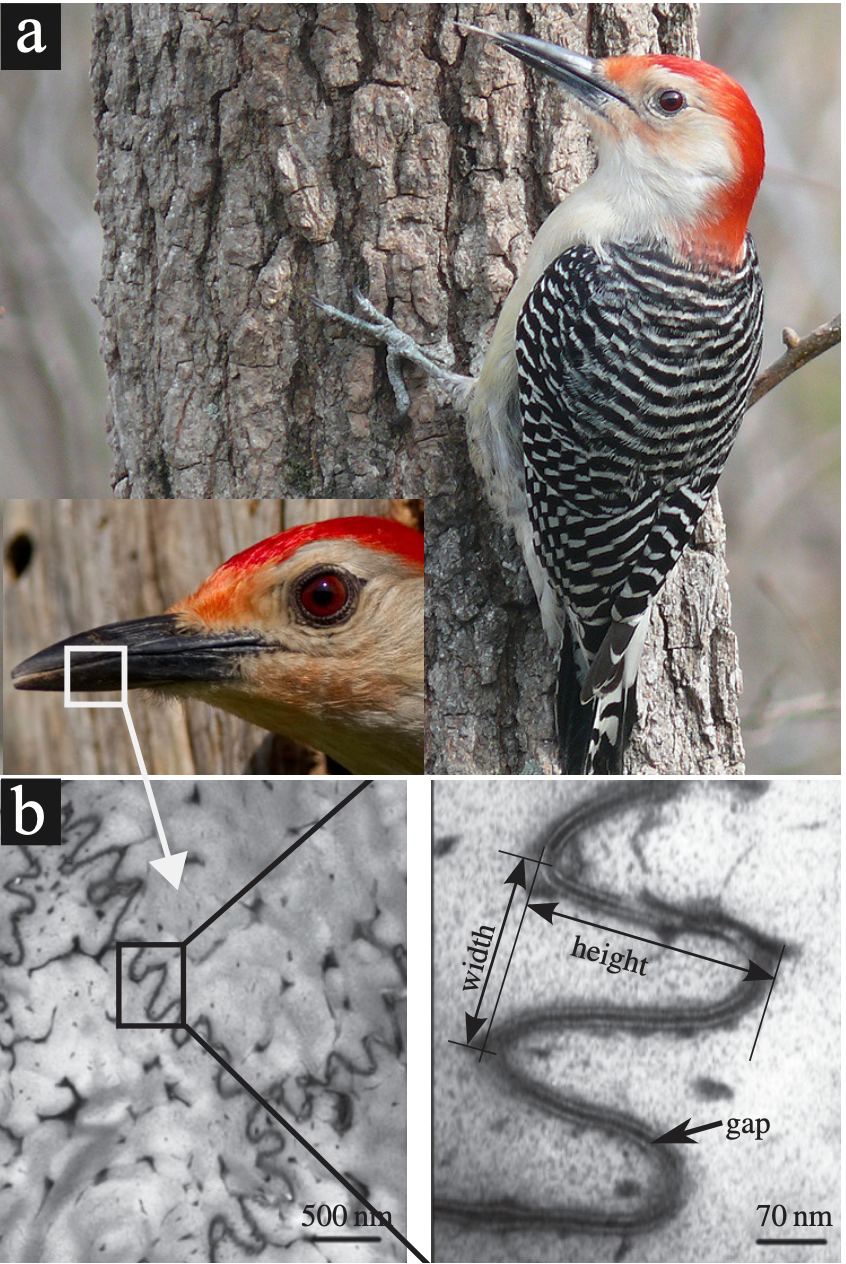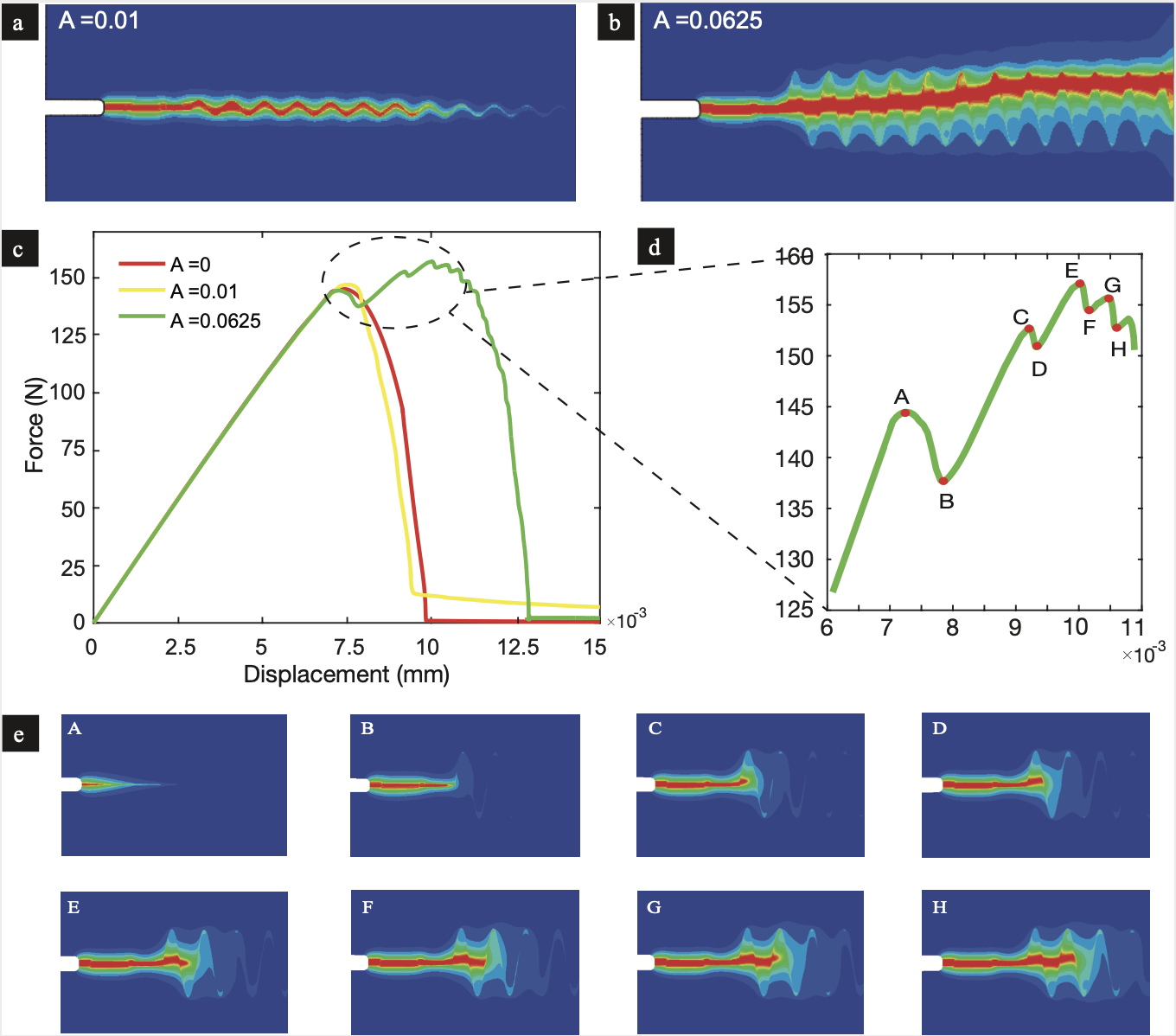Phase field fracture
New understandings of the role of wavy interface for toughness enhancement
Topic A: Toughness enhancement of wavy interface
Wavy interface is a prominent architectural motif in structral biomaterials, such as woodpecker beaks and the cranial bones of rams, that are subjected to impact or cyclic loads but must remain intact to perform their mechanical functions.

(a) shows a red-bellied woodpecker (Melanerpes carolinus); the inset provides a closer view of its beak. (b) The micro-structure of gap the beak consists of wavy interface between keratin scales on the outermost layer.
To investigate the toughening mechanism of materials with wavy interface, we performed a study of crack propagation in materials with wavy interface using the phase field modeling of fracture. We found that wavy interface enhances the interfacial toughness through crack arrest, deflection, and re-initiation.
The crack propagates along a flat smooth interface.
The crack propagates along a wavy interface with small amplitude.
The crack propagates along a wavy interface with large amplitude.

(a) Crack propagation along the interface for A = 0.01 mm. (b) Crack propagation jumping out the interface and through the bulk material for A = 0.0625 mm. (c) Load-displacement curves for the straight and wavy interfaces. (d) Zoom-in view of the load-displacement curve indicated by dashed circle in (c) showing the instabilities during the crack propagation. (e) Snapshots at instability point as indicated in (d).